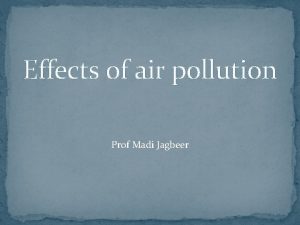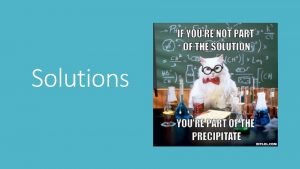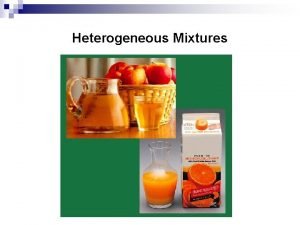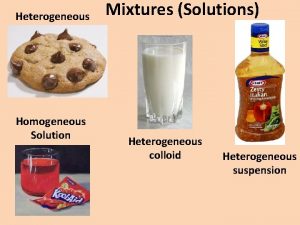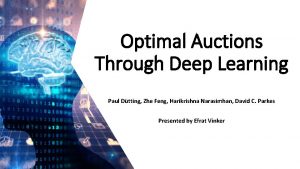Optimal Pollution Policies with Heterogeneous Plants Zhe Li









- Slides: 9

Optimal Pollution Policies with Heterogeneous Plants Zhe Li Discussant Leilei

Summary • General Equilibrium Approach • Heterogeneous firms: in terms of productivity. • Goal: to measure welfare effects from a pollution policy. • Goal: to identify the disutility function of pollution.

Model • Consumer. CES utility Max utility subject to budget constraint. • Government Aggregate transfers=tax income from pollution. • Producers Clean good: linear production technology. Dirty goods: CRS technology. θ– dispersion of productivity Maximize profits.

Equilibrium • Quote “A competitive equilibrium is an allocation, a price system, a law of motion of the aggregate level of pollution (2. 2), and a government policy such that – (a) given the price system, the government policy, and the law of motion of the aggregate level of pollution, the allocation solves both the plant’s problem and the consumer’s problem; – (b) given the allocation, the price system, and the law of motion of the aggregate level of pollution , the government policy satisfies the budget constraints (2. 3); and – (c) market clearing conditions from (2. 13) to (2. 16) are satisfied. ”

Steady State • X% increase in tax rate results in y% decrease in welfare.

Pollution Permits • Firms are given a permit to produce ϑq(x) unit of pollutant. • This is distortional.

Adoption of New Technology • If adopt, lower emission rate. • At some cutoff productivity level, the firms with higher productivity adopt, the ones with lower productivity do not adopt. • If tax rate increases, cutoff productivity level decreases, more firms adopt. High productivity firms gain more market shares.

Comments • Robustness checks. • In the data section, you mentioned there are 16 industries. It sounds like this model is about industry heterogeneity or all firms within an industry have same productivity (which is not what we observe). • Model different industries, with each industry having a continuum of heterogeneous firms. Brands in a given industry substitute more closely for one another than they do for the outputs of different industry.

Cont’d • Model entry and exit. Firms that we see are the “survivors”. The distribution of productivity is a conditional distribution. So an increase in pollution tax or something may force the least efficient dirty firms to exit. So overall there is productivity gains, and maybe that should be included in the welfare function. • Spellchecking.
 Pang guan zhe qing
Pang guan zhe qing Cs zhe jiang
Cs zhe jiang Zhe yi sheng zui mei de zhu fu lyrics
Zhe yi sheng zui mei de zhu fu lyrics Air pollution effects plants
Air pollution effects plants Vascular plants vs nonvascular plants
Vascular plants vs nonvascular plants Flowering plants and non flowering plants similarities
Flowering plants and non flowering plants similarities Photosynthesis equation
Photosynthesis equation Reproduce by spores
Reproduce by spores What is homogeneous mixture
What is homogeneous mixture Cloudy mixture with particles that move erratically
Cloudy mixture with particles that move erratically



